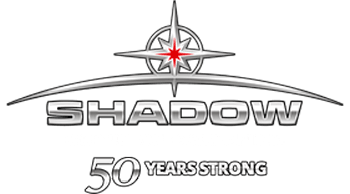Shipping metals and minerals in Canada is a complex process that requires careful planning and the right expertise. From raw ores to processed metals, each material has unique characteristics that affect how it should be transported. Our guide to shipping minerals in Canada is designed to provide you with the necessary knowledge and tools to ensure your shipment arrives safely, on time, and in full compliance with regulations.
Shadow Group, a trusted expert in the field, presents a comprehensive guide to shipping minerals in Canada. This guide will walk you through everything you need to know, instilling confidence in your shipping process.
1. Understanding Metals and Minerals
Before shipping, it’s important to know exactly what type of metals or minerals you’re handling. Each material comes with its own weight, density, and handling needs. Precious metals like gold or silver require extra security and careful packaging, while bulk ores need sturdy containers and protection from moisture. Keeping these factors in mind is key in our guide to shipping minerals in Canada, helping you pick the right transportation method and packaging for a safe, smooth shipment.
2. Preparing for Shipping
Proper preparation is key to a smooth shipping process. Start by accurately weighing and measuring your shipment, then select packaging that protects the material from moisture, contamination, and damage. Labelling is also essential. Clearly mark hazardous or heavy materials and follow Canadian and international shipping regulations. Completing all necessary documentation ahead of time helps avoid delays at customs or freight terminals.
3. Modes of Transportation
Choosing the right mode of transportation depends on the type of material, shipment size, and urgency. Road freight is commonly used for regional shipments, offering flexibility in pickup and delivery. Rail transport is cost-effective for large volumes over long distances within Canada. For international shipping, ocean freight is often the most economical option, while air freight is faster but more expensive, usually reserved for high-value or time-sensitive minerals.
4. Freight Containerization
Containerization provides safety and efficiency when shipping minerals. Full container loads (FCL) are ideal for large shipments, keeping your metals or minerals secure and minimizing handling. Less than container loads (LCL) are better for smaller shipments that don’t fill a full container, though they may require extra handling and consolidation. Using the right container type—whether standard, refrigerated, or specialized bulk containers—can prevent damage and simplify logistics.
5. Choosing the Right Shipping Partner
Working with an experienced shipping partner can make shipping metals and minerals much easier. A trusted logistics team knows the challenges covered in our guide to shipping minerals in Canada, from proper packaging to staying compliant with regulations, so your shipment arrives safely and on time.
At Shadow Group, we specialize in shipping metals and minerals across Canada and internationally. Our team handles every detail of your shipment with care, ensuring safe and timely delivery, whether you’re shipping bulk ores or high-value metals.
Get started with a partner you can trust.
